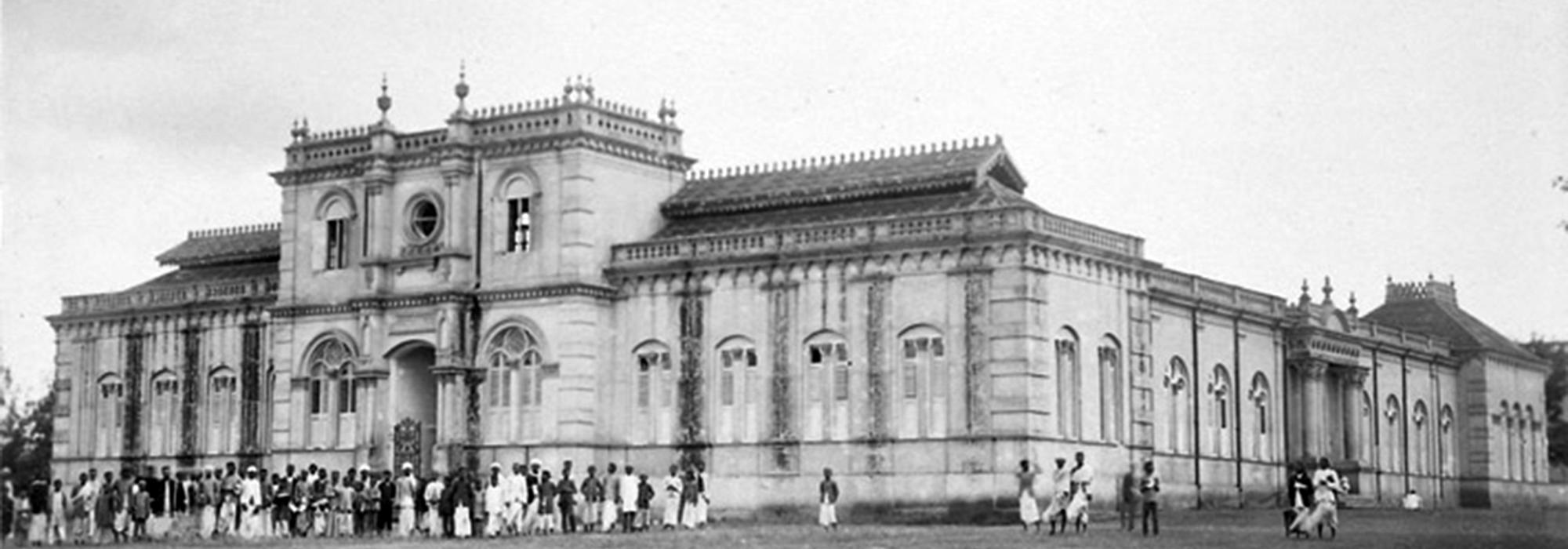Sir K. Seshadri Iyer was a native of Madras. He hailed from the region of Palghat (Palakkad). He wasn’t, in fact, someone the British authorities had summoned. I have heard that it was Rungacharlu who brought Seshadri Iyer into government service. When Rungacharlu was in the government service of the Madras Presidency, there were occasions when he had to visit places such as Coimbatore, Wayanad, and Palghat on government duty. On one such official trip, he got introduced to the family of Seshadri Iyer and came to realize that young Seshadri was a brilliant intellectual. Since he was in need of a competent, friendly, and loyal person to assist him, Rungacharlu selected Seshadri Iyer.
Overbearing Personality
I did not have the chance to see or meet Seshadri Iyer. An elderly relative of mine had apparently seen him from a distance, quite a distance. This relative had served as a Shekdar and was receiving government pension.
“What an impressive personality! What a great man! A forehead full of vibhūti – and that white vibhūti would complement his dark complexion so well! He was a well-built person. He used to walk with such panache!” Such were his words of praise for Seshadri Iyer.
I asked, “What did he say?”
He replied, “Oh well, he said something; he said it to someone. Some four or five eminent personages were around him. How would their conversation be audible to me?”
“Where were you?”
“I was around ten or fifteen yards away from the compound wall. Who would dare enter the premises! He used to be like a tiger. What a dominating and egoist person! Would the liveried guards ever allow a person like me to get anywhere close to him?”
“Why had you been there?”
“Don’t they all say – he was great personality! So, I went to see how he would be. I folded my hands with respect from where I stood. Whether or not he was able to see it, I felt a sense of satisfaction. When the Deputy Commissioner and several people of great authority themselves were standing at a distance from him, how important was I after all?”
The aforementioned conversation shows the opinion of common people about Seshadri Iyer. The essence of it is that he was incredibly resolute and dictatorial. Anyone who has seen his documents and letters would testify to this being the correct understanding of his personality.
Treatment of Letters and Documents
Seshadri Iyer had a legible handwriting. It wasn’t difficult to read. Even his sentence construction used to be simple. The sheet of paper on which he would have written something never carried even a single smudge. He would personally write by hand, from the beginning till the end, all the hukums that had to be issued by the government, leaving to the Secretary only the actual act of signing.
Iyer used to keep tens of letters pending, for months on end, before taking decisions. His mind was mostly engrossed in giant projects like the construction of tanks and lakes such as Hesaraghaṭṭa, Mārīkaṇivè, and Śivana Samudra; the arrangement of electricity; construction of the Railway Layout; and correspondence with the British Government. Most of his time would be spent on things such as trips to villages, discussions with scholars, and meetings with the British authorities. He had entrusted most of the rudimentary, day-to-day administrative affairs to his chief secretary Chengai Srinivasa Iyengar.
Once every two or three months, Seshadri Iyer would enquire about the letters that needed to be attended by him personally. He would then firmly sit down for two to three weeks and resolve all the issues. He sat in his room alone, take one file at a time, read them personally, and finally wrote his verdict. The old letters that had remained pending for three to four months would be decided upon within three or four weeks. Thereafter, the Dewan would not have the disquiet of these day-to-day, routine activities for the next three to four months.
Nanjundayya’s Method of Working
Another person who conducted his work in this manner was H V Nanjundayya. [See Vol. 1 of The Art Gallery of Memories, pp. 99–123] He would ask either his assistant or the clerk, “How many files are pending?”
If he was told that there were twenty or thirty files, he responded, “That’s all. Isn’t it?” This would be his standard response until the files numbered two hundred or three hundred – “Let it be there; where can it go?”
When the number of files touched three hundred, one morning he would go to the office at around eight and sit down. He didn’t the assistance of any clerk. He would come from his house, ascend the stairway, and have the sentinel open the lock. The horse or the cart that he had ridden while getting to office would be promptly sent back to his house upon his instructions. Nanjundayya would study the files till noon, without moving an inch, and mark his decisions. His lettering was legible. The style of sentence construction was precise and unambiguous. In this manner, within four or five days, all the files would melt away. Thereafter he would call his secretary and say, “Take a look – everything is complete. I have the luxury of some leisure henceforth, I presume!”
Even C S Balasundaram Iyer, more or less, belonged to the same category.
The access to information and regular updates from various departments were conveniences they all enjoyed. Regulations and laws related to those departments used to be on their fingertips. They also knew the background and history of each and every subject clearly. Thus, with a strong air of authority, they were capable of taking critical decisions in favour of the government.
To be continued...
This is the first part of an English translation of the third chapter of D V Gundappa’s Jnapakachitrashaale – Vol. 4 – Mysurina Diwanaru. Edited by Hari Ravikumar.














































